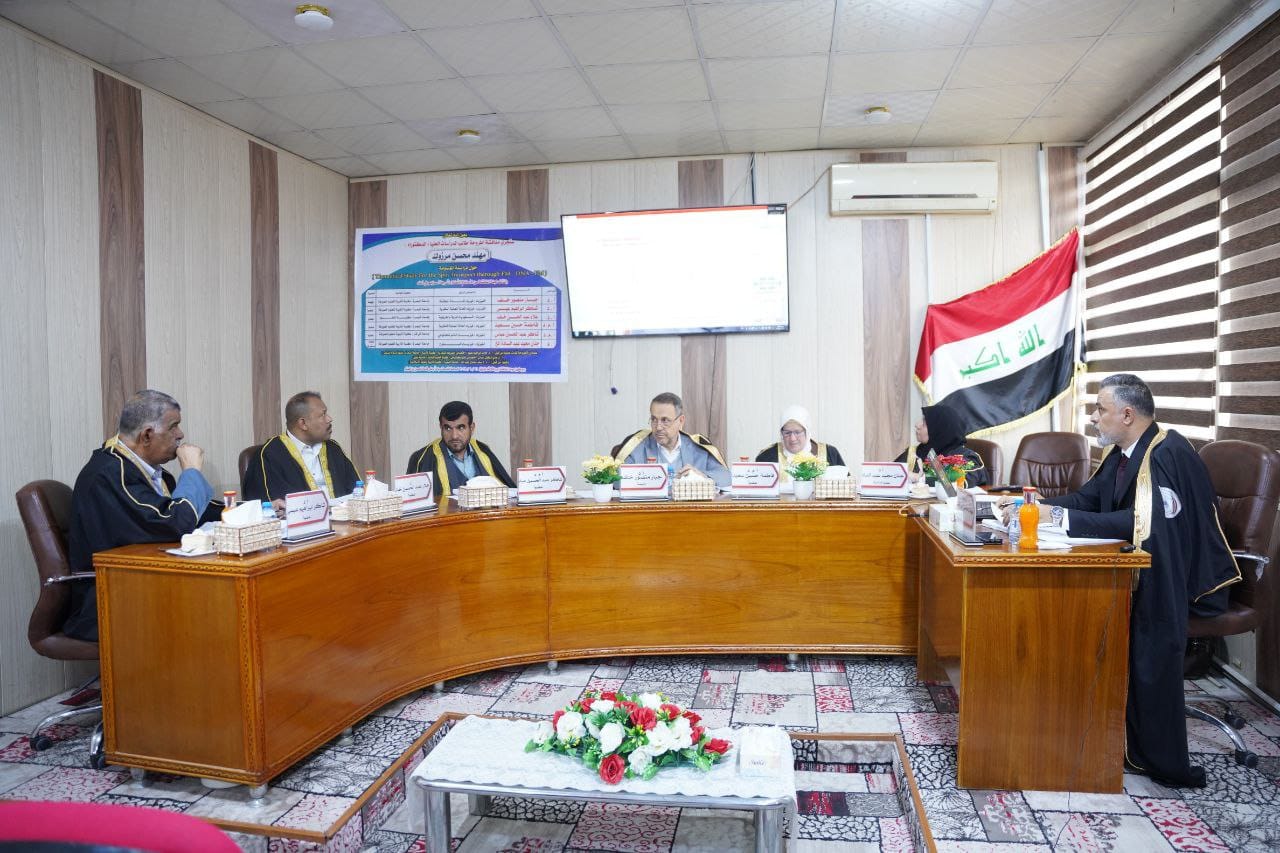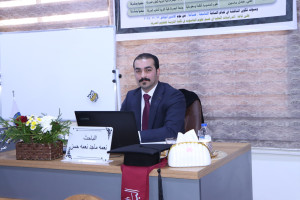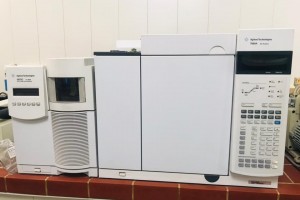
The College of Education for Pure Sciences in the Department of Physics discussed a doctoral thesis on a( theoretical study of the transfer of twist through DNA placed between two ferromagnetic electrodes).
The thesis presented by the researcher (Muhannad Mohsen Marzouk) included:
Study of twist transfer through the DNA system composed of quinine-cytosine. Accordingly, our theoretical treatment of a single effective magnetic region (including the bases of the pairing and the backbone) was coupled to ferromagnetic poles, in the case of a parallel or anti-parallel distribution, through quantum magnetic connections (G/C)N- FM - FM). Our treatment was based on the coherence model. Al-Mateen for the purpose of deriving a clear formula for the transmittance spectrum, which was exploited to examine the characteristics of current-dependent bias-voltage and conductivity-temperature dependence. Our calculations were also performed in the absence and presence of spin-orbit coupling for the strong approach, the weak approach, and the approach without the backbone. The cyclization-dependent factors investigated in our study determine the transport properties of the N(G/C) molecule. These factors include spin-based coupling between parts of the system, quantum communications between the active region and the electrodes, molecular length, the majority or minority of spin of electrons at the ferromagnetic electrodes, as well as the applied bias voltage. Changing these factors can enhance or suppress the transfer of bromine through the (G/C)N molecule.
Permian polarization cannot be observed in the absence of any of the aforementioned factors. All these factors have been examined in detail. Transmittance spectrum calculations confirmed that the twist transfer through N(C/G) arises through the tunneling process between adjacent bases through the overlapping of base orbitals (LUMO). Physical mechanics appears due to the combination of quantum interference with the presence or absence of spin-orbit coupling. The best functional manifestations of oceanic influences, such as electrode temperature, were examined. Our results demonstrate that the spin-polarized transport can be significantly regulated by the length of N(G/C) (in addition to the spin distribution at the poles and the spin-orbit coupling effect), which can exhibit efficient spin-filtering and as a spin-switch by exploiting the spin-blockade phenomenon.








